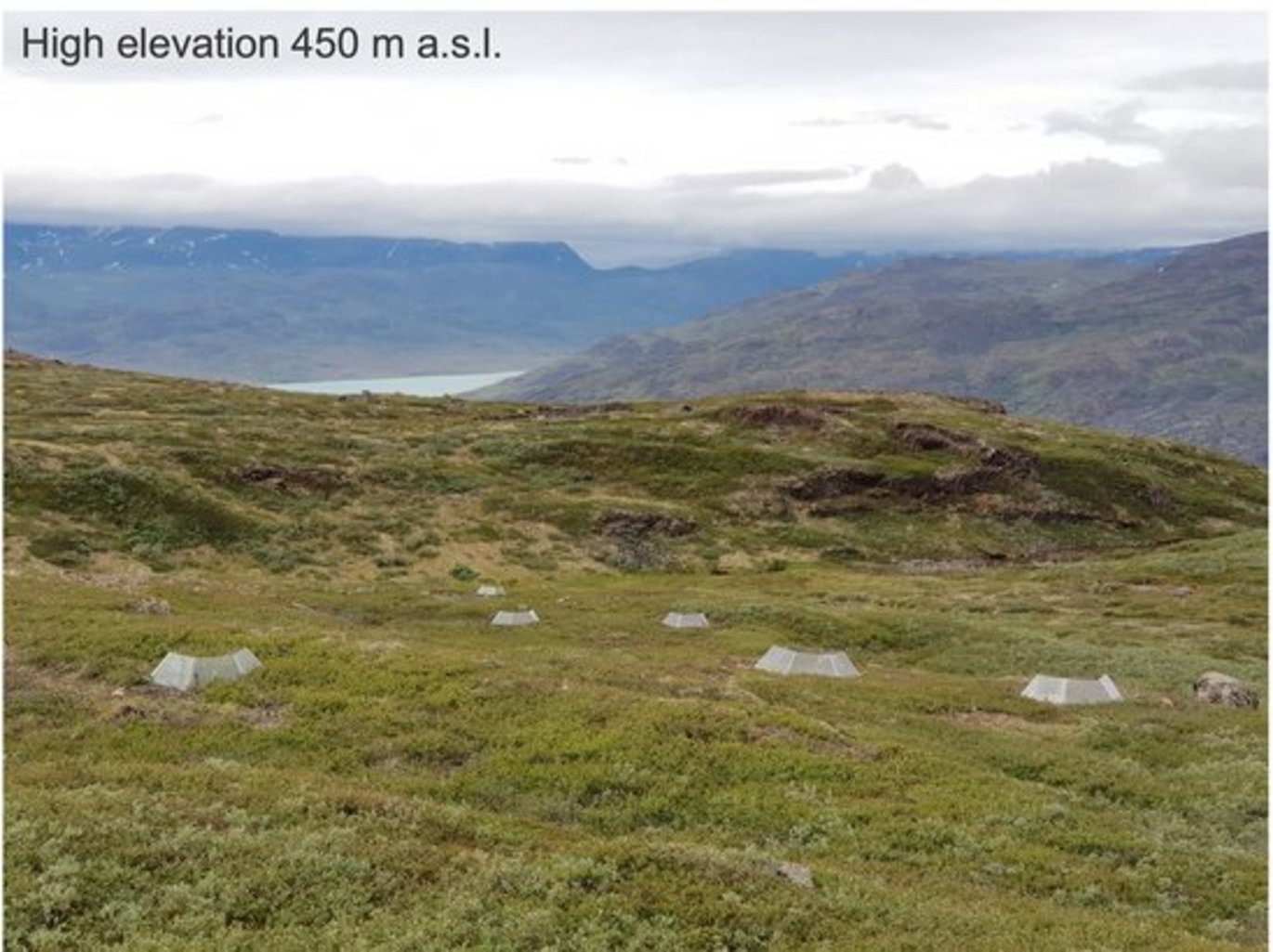Seasonal and Elevational Variability in Dwarf Birch VOC Emissions in Greenlandic Tundra
New publication by Rieksta J, Li T, Davie-Martin CL, Simin T, Brogaard Aeppli LC, Høye TT et al.

Abstract:
Rising temperatures amplify biogenic volatile organic compound (VOC) emissions from Arctic vegetation, causing feedbacks to the climate system. Changes in climate also alter plant physiology and vegetation composition, all of which can influence VOC emissions. Moreover, leaf development and biotic stresses cause highly variable emissions during the growing season. Therefore, linking VOC emissions with plant traits and tracking responses to climate change might provide better understanding of VOC emission regulation under future conditions. We measured VOC emissions and other plant traits in dwarf birch (Betula glandulosa) at two elevations in Narsarsuaq, South Greenland. The measurements were performed in warming experiments that have run since 2016. We collected VOCs using the branch enclosure method from early June until late July 2019 (n = 200). Emissions of green leaf volatiles (GLVs), oxygenated monoterpenes (oMTs), and homoterpenes followed a seasonal trend. VOC emission rates and the diversity of the VOC blend decreased at the end of the measurement period. Differences in VOC emission rates between elevations were pronounced early in the season. Majority of the traits did not explain the variation in VOC emissions. We show strong seasonal variability in VOC emissions within the growing season, which is likely driven by leaf phenology. While the diversity of VOCs was greater at the milder low-elevation site, VOC emission rates were higher or similar at the harsher high-elevation site, showing stronger VOC emission potentials than previously assumed. Seasonal variations in the emissions of VOCs are crucial for accurate predictions of current and future VOC emissions from arctic ecosystems.
